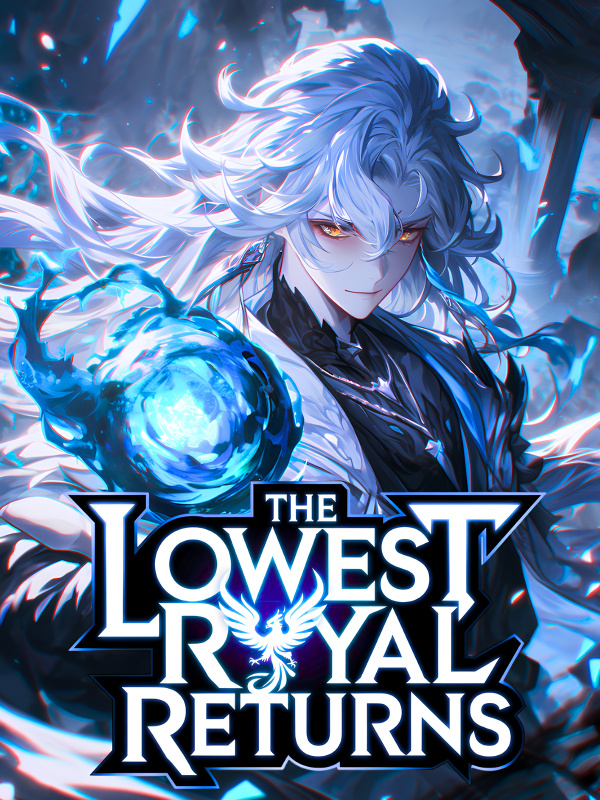©Novel Buddy
Super Genius DNA-Chapter 197: Moratorium (2)
Chapter 197: Moratorium (2)
The first test car was Choi Yeon-Ho’s old Mercedes Benz. He installed the micro-dust filter on the grille, side skirt, and the bumper. Next, the filters were installed on employees’ cars and three company cars. For several weeks, all employees took turns driving the car during work hours, as Choi Yeon-Ho made driving along the Han River a part of their job.
“I had no idea I would be getting paid to drive,” Kim Soo-Chul said from the passenger’s seat.
“Yeah. Oh, but Soo-Chul, please don’t smoke before you get in my car. I hate the smell of cigarettes,” Song Ji-Hyun said as she pressed on the accelerator.
“Do I smell like cigarettes?”
“No, but just in case.”
“Alright. But Doctor Song, you have a nice car. I guess you’re the next best scientist after Doctor Ryu... How much did you make with Cellicure? You had a lot of stock in our company, so you probably made a lot. You bought this then, right?”
“Um...”
She didn’t actually buy this car. She got it as a sponsorship when her picture with Young-Joon was all over the media. Young-Joon was already too famous, so it was probably a strategy to capitalize on Song Ji-Hyun’s fame as she was starting to rise as the next big thing. However, Song Ji-Hyun didn’t say that out of embarrassment.
“How much dust do you think our filter caught?” Kim Soo-Chul asked.
“Mr. Choi changed the filter after driving for a week, so it’ll need to be changed soon,” Song Ji-Hyun said.
“Oh, Doctor Song, Mr. Choi is having a meeting with the Ministry of Trade, Industry, and Energy today, right?”
“Yeah.”
Song Ji-Hyun nodded.
“The data is pretty successful now, so it’s going to be a national project along with the renewable energy policy that the Ministry of Trade, Industry, and Energy is implementing. I think it’ll happen, since this is such a good item.”
“Yeah. I wonder how much our stocks will skyrocket this time. Hehe,” Kim Soo-Chul chuckled.
—Next...
The news was on the radio. They didn’t pay attention to any of it because they were chatting, but they froze the next moment. In the silence, the news anchor announced...
—In the midst of A-GenBio’s legal battle with Atmox, Doctor He Jiankui has revealed shocking news about Mr. Ryu Young-Joon.
—A large industrial area is being built along the eastern coastline of China, and it could potentially blow a large amount of micro-dust into Korea when complete. Doctor He Jiankui warned Mr. Ryu Young-Joon about this, but he allegedly disregarded the public’s health as he was focused on the legal battle.
—The documents Doctor He Jiankui sent revealed a detailed description about the scale of the facilities and factories being built. Experts warn that the amount of micro-dust in Seoul could exceed one thousand micrograms per cubic meter once the industrial zone is completed. Next, an interview from Doctor Lee Yoon-Song, a professor of environmental engineering at Jungyoon University.
—Hello. The smokestacks in the industrial zone are all very high. They are also quite large and mostly composed of power plants for aluminum mining and processing. It seems like it will mostly use thermal power as there are a lot of coal reserves nearby and China has a well established route to transport coal to the eastern coastline. If so, there’s a high chance that the Seoul metropolitan area is going to be covered in smog worse than the 70’s.
—Thank you. Doctor He Jiankui warned South Korea citizens about this. At the same time, he accused and condemned Mr. Ryu Young-Joon for neglecting his responsibility to protect the health of his people as a member of the GSC.
—Citizens are showing mixed reactions. On one side, citizens do not believe that Mr. Ryu Young-Joon should not be held responsible for this as this should have been taken care of by the government, while others believe he should have at least warned the government considering his position in society.
—Some have argued that the micro-dust will become a national diplomatic issue and affect the lawsuit against Chinese GSC member Doctor He Jiankui. Furthermore, there are also conspiracy theories that Mr. Ryu Young-Joon deliberately did not inform the government and rushed the lawsuit...
“Can you call Mr. Choi?” Song Ji-Hyun asked. “His meeting should be over. Let’s hold a press conference with the ministry.”
“Okay.”
Kim Soo-Chul picked up his phone.
“He’s taking care of a merger between two companies, a moratorium in China, and an international lawsuit, so let’s take care of this ourselves,” Song Ji-Hyun said.
* * *
“There’s a different mutation other than Delta-32?”
The conference room was filled with shock. Young-Joon explained the genomic data of Mimi that was on the screen.
“This is where the Delta-32 mutation occurred in the CCR5 gene.”
Young-Joon pointed to a part of the DNA sequence.
“But the DNA sequence after this should be TTTGG, and the DNA sequence we’re seeing in this baby’s blood begins with TGG, with the preceding TT missing. That’s an error or two base pairs,” Young-Joon said. “This is a defect in the process of recombining the DNA template after cutting the target with gene scissors. The deletion of two base pairs resulted in this. And as you all know, Mimi is in very poor condition; she is very susceptible to infections and is living in a sterile room.”
Young-Joon slowly walked across the stage.
“Why is that?” he asked. “As you all know, a newborn baby is born with the mother’s antibodies. Then, they get additional antibodies—antibodies that the baby’s body doesn’t yet produce—as they feed on the mother’s milk. This means that they have the same immunity as the mother, but why does Mimi have to live in a sterile room when her mother is completely healthy?”
“...”
“CCR5 is involved in immunity. It’s something that the scientific community didn’t know about until now. When someone has Delta-32, they have to be careful of infections at old age since it can reduce their lifespan if they don’t. But this is what happens if the gene doesn’t work at all,” Young-Joon said. “This baby has a congenital immune deficiency, a condition similar to AIDS, which is what Doctor He Jiankui wanted to prevent by introducing Delta-32.”
“...”
“Actually, you could even say it’s worse than that, since HIV has a lot of treatments, but not genetic mutations.”
Young-Joon stared at He Jiankui after putting the microphone down. He Jiankui could feel Young-Joon’s emotions even though he wasn’t screaming in rage or berating him: it was a calm, but vast anger. For the first time in his life, He Jiankui was in fear.
He Jiankui, who was born into a good family with a brilliant mind and received a good education, thought everyone in the world was at his feet. He was a superior human being; he thought there were only a few scientists in the world who could match him as a superior, more advanced human being. He put Young-Joon above him when he saw him stop the anthrax attack at the Grand Hyatt Hotel, but his ego was still strong. He thought their intellectual difference between him and Young-Joon was negligible, and he thought he was the only one who could be Young-Joon’s friend and colleague.
But not anymore. Young-Joon, this person was unrivaled. In front of his knowledge and genius, all other human beings were nothing but trivial animals, like ants.
“Everyone,” Young-Joon said. “Before we have a second victim, please...”
Young-Joon picked up the moratorium.
“Please sign this.”
After a moment, the scratching of pens filled the room. He Jiankui couldn’t say anything.
“A-GenBio developed a treatment for her,” Young-Joon said. “It’s a tricky preclinical situation because it’s a disease that doesn’t exist, and there aren’t even any similar animal models.”
He went on to the next slide. A schematic of the treatment using Cas9 appeared.
“We have to do a difficult experimental treatment, which involves putting Cas9 and normal CCR5 into all her bone marrow and lymph nodes.”
Cas9 would enter every cell in the baby’s bone marrow and lymph nodes, and it would cut the DNA where the mutation was insured. Because a cut in the DNA would be lethal to the cell, it would automatically trigger a cellular system to repair it. If it had a normal piece of DNA nearby, there was a chance that the cell would repair the cut using the normal DNA fragment as a template. This would remove the mutation and replace it with the normal gene. Making an excision, putting in some plates, and sewing it back up: they had to perform this molecular mechanism similar to surgery in all the baby’s hematopoietic cells and lymph nodes.
“It’s called homology directed repair, and this is how we will treat the patient in this clinical trial. If the DNA in all the hematopoietic cells and lymph nodes is replaced with the normal gene, the immune cells produced from it will work normally, and the baby will be able to recover her immunity.”
The scientists, who had finished signing, stared at Young-Joon.
“How are you going to introduce Cas9 and the normal DNA into the cell? The CCR5 fragment will quickly disappear since it’s small, but it may survive in the cell if you use a viral protein for Cas9. We don’t know what kind of side effects that might cause,” asked Doctor Craig. “Doctor Ryu, you’ve used dendritic cells to deliver Cas9 before, but that won’t work this time, since hematopoietic cells are different from immune cells. Do you have another way?”
“That’s why we're putting the Cas9 as a purified polypeptide wrapped in a superfect exosome instead of in DNA form.”
“Does it have good efficiency?”
“We just have to control the purity and the amount of the polypeptide. The drug delivery part has already been proved experimentally.”
“Hm.”
The reporters struggled to take notes on the medical jargon that was flying around so quickly, but the scientists here understood what was being said as they were all prominent in their field.
The scientists all nodded. It was possible, but it was too big of a task.
“It would be great if we could do a preclinical study,” someone said.
He Jiankui felt like the back of his head was burning. The reason they couldn’t do a preclinical experiment was because He Jiankui was the one who created this new disease; there wasn’t even an animal model because it didn’t exist before. Some of the scientists clicked their tongue and glared at He Jiankui.
However, the solution to this worst-case scenario also came from the power of science.
“We’re making a new animal model with Cas9,” Young-Joon said. “We genetically modified a few mice during the embryonic stage and put the same mutation that Doctor He Jiankui made, which creates an animal model similar to Mimi. We plan to do a preclinical experiment to correct it, but I don’t know if we have time.”
Young-Joon presented the current progress on the screen.
“If Mimi cannot make it this far and her health is at risk, we’re prepared to skip the preclinical trial as well. We already have the mother’s consent, and we just need the approval of the Ministry of Health.”
The source of this c𝐨ntent is freewe(b)nov𝒆l







